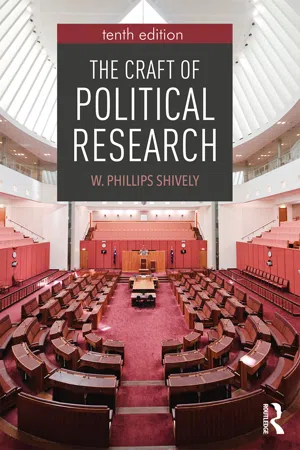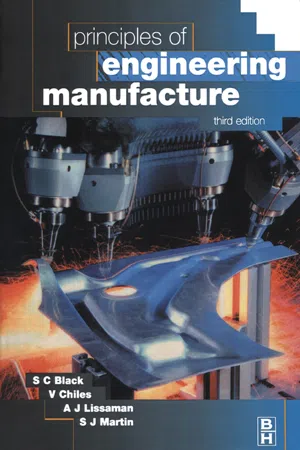Mathematics
Linear Measure and Precision
Linear measure refers to the measurement of length, typically using units such as meters or centimeters. Precision in linear measure refers to the degree of exactness or accuracy in the measurement. It is important to consider precision when making measurements, as it can impact the reliability and usefulness of the data collected.
Written by Perlego with AI-assistance
Related key terms
Related key terms
1 of 4
Related key terms
1 of 3
4 Key excerpts on "Linear Measure and Precision"
- eBook - ePub
- Roger Timings(Author)
- 2007(Publication Date)
- Routledge(Publisher)
6 Measuring When you have read this chapter you should understand: • What is meant by linear measurement. • How to make linear measurements. • What is meant by angular measurement. • How to make angular measurements. • The factors affecting accuracy of measurement. • The terminology of measurement. • The general rules for accurate measurement. • How to measure workpieces having square, rectangular, circular and irregular-shaped sections. 6.1 Introduction Measuring can be considered to be the most important process in engineering. Without the ability to measure accurately, we cannot: • Mark out components as described in Chapter 7. • Set up machines correctly to produce components to the required size and shape. • Check components whilst we are making them to ensure that they finally end up the correct size and shape. • Inspect finished components to make sure that they have been correctly manufactured. 6.2 Linear measurement When you measure length, you measure the shortest distance in a straight line between two points, lines or faces. It doesn't matter what you call this distance (width, thickness, height, breadth, depth or diameter) it is still a measurement of length. There are two systems for the measurement of length, the end system of measurement and the line system of measurement. The end system of measurement refers to the measurement of distance between two faces of a component, whilst the line system of measurement refers to the measurement of the distance between two lines or marks on a surface. No matter what system is used, measurement of length is the comparison of the size of a component or a feature of a component and a known standard of length. In a workshop this may be a steel rule or a micrometer caliper, for example - eBook - ePub
- W. Phillips Shively(Author)
- 2017(Publication Date)
- Routledge(Publisher)
p.60Precision5 Problems of MeasurementThe preceding chapter dealt with problems of the reliability and validity of measures. Those problems concerned the relationship between a measure and the concept that measure is intended to mirror. In this chapter, we deal with the “quality” of the measure itself—how precise it should be, or how finely calibrated, if it is to be useful.In this chapter, I sort out just what kinds of precise quantification are helpful in political research. The cardinal rule of precision might read as follows: Use measurements that are as precise as possible, given the subject you are studying; do not waste information by imprecise measurement. One theme of this chapter will be that this rule is as susceptible to violation by “quantifiers” as by “nonquantifiers.” To discuss it further, I must first distinguish between two kinds of precision with which we shall be concerned. I call the first of these precision in measures and the second precision in measurement.Precision in MeasuresPrecision in measures corresponds roughly to our colloquial use of the word precision —that is, keeping the units of measurement relatively fine. For example, reporting a person’s income in dollars is more precise than rounding it off to the nearest thousand dollars, and rounding income off to the nearest ten thousand dollars is still less precise. Similarly, reporting a person’s religion as “Presbyterian,” “Reformed Jewish,” “Greek Orthodox,” and so on is more precise than reporting it as “Protestant,” “Catholic,” and “other.”Although as a general rule, precision in measures is obviously a good thing, its importance can be overrated. First, the degree of precision we need is determined by what we wish to do with the data. If we were registering voters, for instance, any precision in measuring age that went beyond labeling people “under 18” and “over 18” would be unnecessary and possibly a nuisance as well. Generally, though, in theory-oriented research, we are not able to limit the necessary level of precision in this way. Instead, we are interested in looking at the entire range of variation and have no particular cutoff point in mind. - eBook - ePub
- Douglas K. Brumbaugh, Peggy L. Moch, MaryE Wilkinson(Authors)
- 2004(Publication Date)
- Routledge(Publisher)
5 Measurement Focal Points- Terminology
- Attributes
- Systems
- Units, Tools (instruments), and Precision Linear Measure Area Volume Capacity Weight Time Money Temperature Angle Measure Dimensional Analysis
What is the first thing that comes to your mind when you hear the word “measurement”? Do you think about how many gallons of gasoline you had to buy yesterday, how many miles you must travel to get to class, how many minutes you will be in class, how many dollars will be in your next paycheck, how many ounces of potato chips are in a bag, how warm it will be today, or even how many square yards of carpet you had to buy to cover your bedroom floor? Perhaps you considered one or more of these without thinking of the word “measurement.”Measures are important in our world and we are so comfortable with the concepts that we often accept and understand the information without much thought. Have you ever considered how much the gasoline in your tank weighs, how many times your left front tire revolves as you drive to class, how many seconds you spend in class, what your net salary per hour is, or how temperature is related to humidity? These are all valid measures, you just don’t think of them as relevant to your daily life.The measurement concepts that are so familiar to us have developed over many years. Primitive people used rudimentary methods to measure distances for their foraging or hunting boundaries, but there were no standard units. Figure 5.1 represents ancient Egyptians, who lived along the Nile River and used standard linear measures and elaborate survey methods to mark and remark their crop boundaries as the river flooded and receded, taking and restoring cropland. The Babylonians looked to the stars to measure the length of a year; their calculations were surprisingly accurate and their methods of astronomical observations are the basis for calculations today.TerminologyFig. 5.1Many early measurement techniques were based on human anatomy, as shown in Fig. 5.2 - eBook - ePub
- V. Chiles, S. Black, A. Lissaman, S. Martin(Authors)
- 1996(Publication Date)
- Butterworth-Heinemann(Publisher)
15Precision Measurement
15.1 Introduction
Engineering dimensional measurement involves the Euclidean concepts of the straight line and plane. Linear measurements are ratios expressed in terms of some arbitrary length standard, e.g. the metre. Primary length standards are defined in terms of the wavelength of monochromatic light, for reference an inch is defined legally as 25.40 millimetres. The establishment of an absolute length standard belongs to the realm of physics rather than engineering.The international metre is defined in terms of the wavelength of monochromatic light. The International Committee of Weights and Measures recommended Krypton 86 as the radiation source: under standard conditions the metre equals 1 650 763.73 wavelengths. The metre had its origin in the International Prototype Metre of 1889, a line standard of the form shown in Figure 15.1 . The principal working standards of industry are the well-known slip (or block) gauges together with length bars and, less frequently used, laser interferometers.Figure 15.1 International standard metre of 1889.15.2 Length standards
The International Prototype Metre (Figure 15.1 ) is a line standard. The length is defined by two fine terminal lines. A form of line standard now commonly used in machines employs an optical measuring system. Sources of measuring error can easily arise from:1. Temperature variations, which may arise from the residual heat of the cutting process, or from environmental factors such as draughts, sunshine on the workpiece or the machine tool, or on the co-ordinate measuring machine.2. Flexure variation, caused by changes in weight distribution, i.e. by changing the points of support of a part on a machine.
Index pages curate the most relevant extracts from our library of academic textbooks. They’ve been created using an in-house natural language model (NLM), each adding context and meaning to key research topics.
Explore more topic indexes
Explore more topic indexes
1 of 6
Explore more topic indexes
1 of 4



